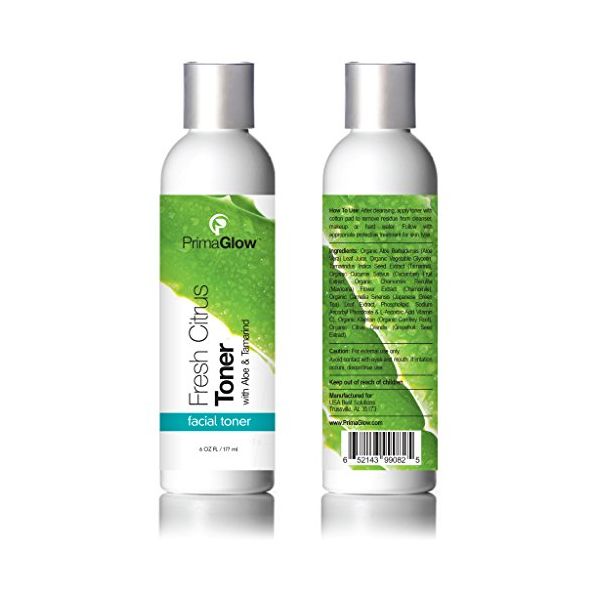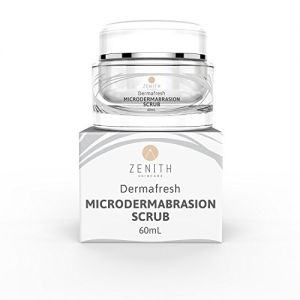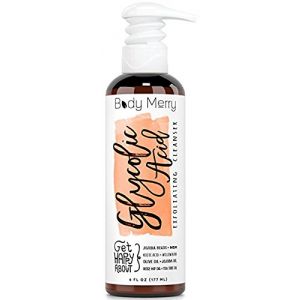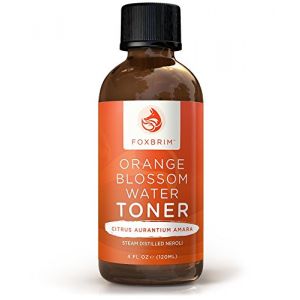- Pros:
- All-natural cleansing, exfoliating, and moisturizing facial toner
- Contains a blend of citrus, aloe, tamarind and additional skin-enhancing nutrients
- Balances skin pH for better nutrient absorption and hydration
- Refreshing
- Made in the USA
- Organic
- Soothes and tightens pores
- Vegan
- Alcohol free
- Paraben-free, synthetic fragrance, chemical-free
Ingredients Concern: None discovered
Cons: Users experiences with this toner may vary.
Green tea contains epigallocatechin-3-gallate (EGCG), which combats UV-induced DNA damage [1].
Aloe barbadensis boost the body's natural wound-healing processes [2].
Vitamin C has antioxidant properties that target irritated, inflamed skin and this vitamin also acts directly upon collagen metabolism by stimulating the production of collagen and elastin fibers in the skin, thereby promoting healthy, vibrant skin [3]. Cucumber and grapefruit seed are sources of vitamin C in addition Sodium Ascorbyl Phosphate and L-Ascorbic Acid Vitamin C.
Chamomile has soothing properties that help target skin irritation, redness, and itching [4].
Tamarindus Indica Seed Extract (Tamarind) helps target skin damage and injuries (e.g., burns, edema) by promoting regeneration [5].
Improve skin health [1]; Anti-acne [1-5]
(Green Tea) contains EGCG, which is an antioxidant that targets oxidative stress-induced skin damage [1].
Aloe barbadensis have anti-inflammatory properties that help restore and maintain the skin barrier [2].
Vitamin C is a powerful antioxidant that penetrates the membrane of cells throughout the body, thereby boosting the health of skin, bone, tendon, and muscle cells as well as immune system function [3]. Cucumber and grapefruit seed are sources of vitamin C in addition Sodium Ascorbyl Phosphate and L-Ascorbic Acid Vitamin C.
Research shows that chamomile has a soothing and softening effect on the skin (scalp) due to its terpenoid and flavonoid components [4].
Tamarindus Indica Seed Extract (Tamarind) contains enzymes, vitamin B, vitamin C, and alpha hydroxyl acids that promote the exfoliation of dead skin cells [5].
Key Ingredients: Organic Aloe Barbadensis (Aloe Vera) Leaf Juice, Tamarindus Indica Seed Extract (Tamarind), Organic Cucumis Sativus (Cucumber) Fruit Extract, Organic Chamomile Recutita (Matricaria) Flower Extract (Chamomile), Organic Camellia Sinensis (Japanese Green Tea) Leaf Extract, Sodium Ascorbyl Phosphate & L-Ascorbic Acid Vitamin C), Organic Citrus Grandis (Grapefruit Seed Extract) The % was not listed
All Ingredients: Organic Aloe Barbadensis (Aloe Vera) Leaf Juice, Organic Vegetable Glycerin, Tamarindus Indica Seed Extract (Tamarind), Organic Cucumis Sativus (Cucumber) Fruit Extract, Organic Chamomile Recutita (Matricaria) Flower Extract (Chamomile), Organic Camellia Sinensis (Japanese Green Tea) Leaf Extract, Phospholipid, Sodium Ascorbyl Phosphate & L-Ascorbic Acid Vitamin C), Organic Allantoin (Organic Comfrey Root), Organic Citrus Grandis (Grapefruit Seed Extract)
After cleansing, apply toner with a cotton pad to remove residue from cleanser, makeup, or hard water. Follow with appropriate protective treatment for skin type.
These statements have not been evaluated by the FDA. These products are not intended to diagnose, treat, cure or prevent any disease.
1. Korać RR, Khambholja KM. Potential of herbs in skin protection from ultraviolet radiation. Pharmacogn Rev. 2011;5(10):164-73.
2. Hajhashemi M, Rafieian M, et al. The effect of Aloe vera gel and sweet almond oil on striae gravidarum in nulliparous women. J Matern Fetal Neonatal Med. 2018;31(13):1703-1708.
3. Murray JC, Burch JA, et al. A topical antioxidant solution containing vitamins C and E stabilized by ferulic acid provides protection for human skin against damage caused by ultraviolet irradiation. Int J Cosmet Sci. 2004;26(5):231-8. J Am Acad Dermatol. 2008;59(3):418-25.
4. Srivastava JK, Shankar E, Gupta S. Chamomile: A herbal medicine of the past with bright future. Mol Med Rep. 2010;3(6):895-901.
5. Nie W, Deters AM. Tamarind Seed Xyloglucans Promote Proliferation and Migration of Human Skin Cells through Internalization via Stimulation of Proproliferative Signal Transduction Pathways. Dermatol Res Pract. 2013;2013:359756.






